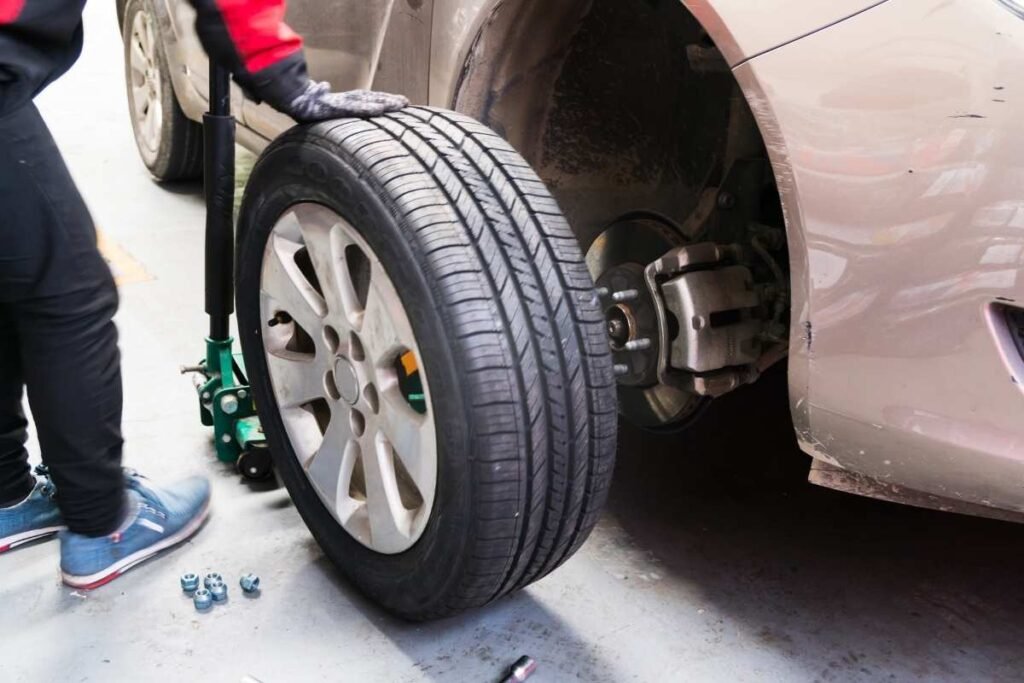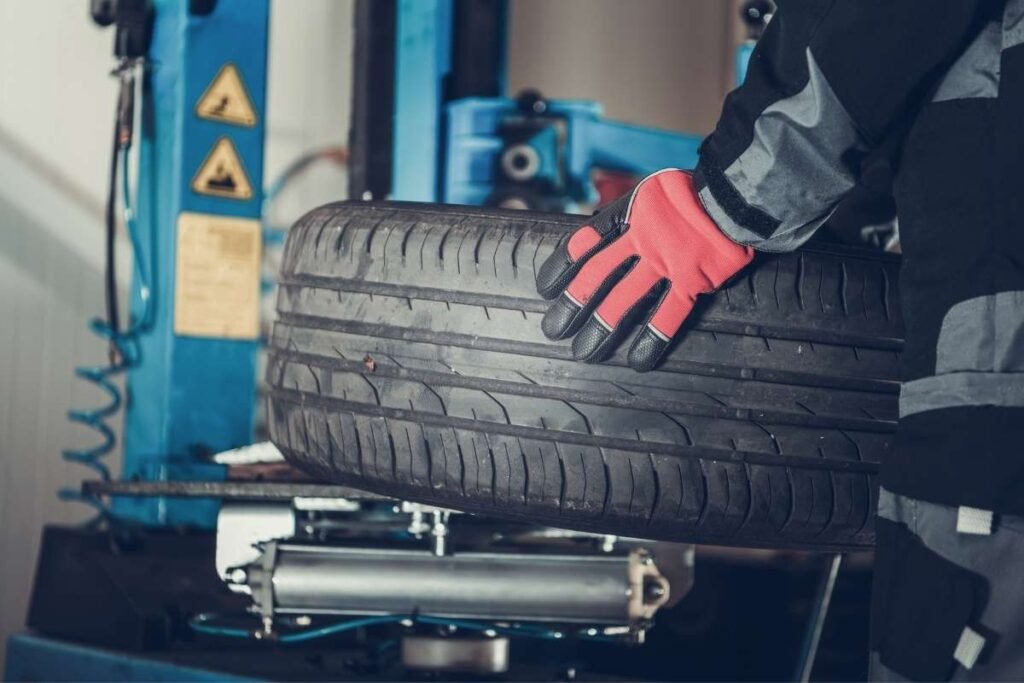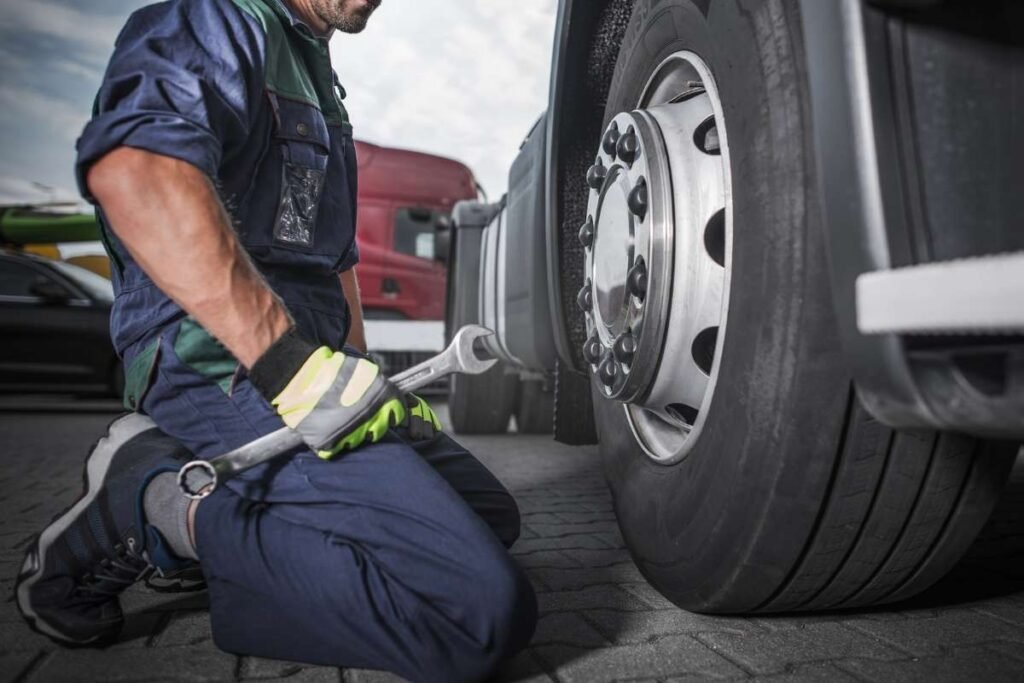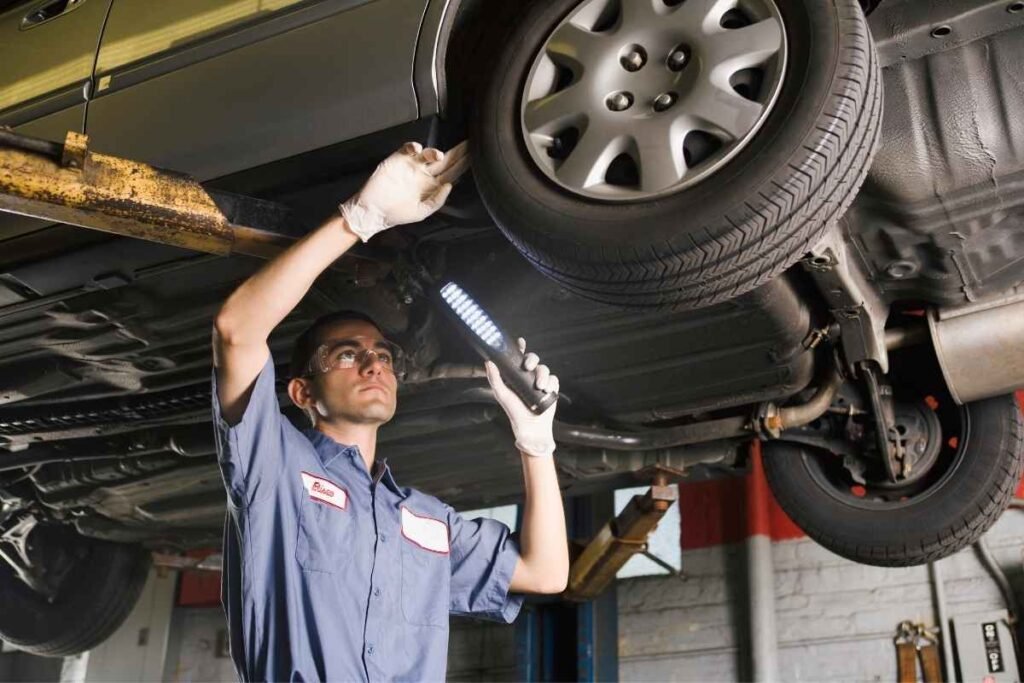How to Do Tire Rotation? Tire Rotation Pattern, Frequency and Best Costs
My experience says, car tire rotation maintains the tire wear even and secures vehicle performance and road safety. The rotation of tires after regular intervals-5,000 to 7,500 miles-helps to avoid unstable wear, improves traction, and saves a good amount of fuel.
If you know how to do tire rotation yourself, you will save the money you would use in their replacement with new ones. I must say, regular rotation is among the most critical steps for vehicle maintenance would help get the most from your tires, raise safety, and optimize fuel economy.
Rotation will equally distribute wear to all four wheels, preventing early tire replacement and improving overall handling. Depending on your vehicle’s drive type-whether front-wheel drive, rear-wheel drive, or all-wheel-you must apply the correct rotation pattern for balanced performance.
Most professional services cost anywhere between $20 and $50, so learning to rotate your tires at home can certainly save both time and money.

What is Tire Rotation?
Tire rotation basically refers to the periodic changing in the position of each tire on your vehicle to evenly distribute the wear throughout. The process prolongs the tires’ life, improves performance, and maintains traction.
Such rotation allows one to avoid uneven tread wear that can cause handling problems and decreased fuel economy.
Most manufacturers will have recommendations for rotating tires at an interval of every 5,000 to 8,000 miles, following a particular pattern, which again depends on whether your vehicle is front-wheel drive, rear-wheel drive, or all-wheel drive.
The rotation of tires is among the most important steps in maintaining your car to keep the ride smooth and safe.
What Does Tire Rotation Do?
Rotating your tires takes the wear patterns on each tire and distributes them in other positions on the car. In this way, you balance the wear on all your tires to extend their life expectancy, while at the same time improving handling and fuel economy by reducing uneven rolling resistance.
Also, the regular rotation will keep your warranty valid because many tire warranties call for rotation to be performed. Preventing irregular wear, the tire rotation cuts down on vibrations and noises for a smoother and quieter ride.
Why Tire Rotation is Important?
Even Wear: Tires wear down quicker in the front compared to the back; this is most common in front-wheel drive cars. That is because additional stresses are placed on the tires due to steering, acceleration, and braking. Tire rotation allows each tire to wear somewhat evenly over time, which extends the useful life of your tires.
Balanced Handling: A car with uneven tire wear is more difficult to handle, especially on slippery roads. Balanced wear maintains optimal traction and stability.
Smoother Fuel Economy: Uneven-wearing tires can increase the rolling resistance, which would make the engine work harder and decrease fuel economy.Cost Savings: Since tire rotation leads to even wear, it prolongs the life of the tires and saves you from early replacement costs.

How To Do Tire Rotation Without Hassle in 5-Steps
Knowing the procedure can be a beneficial deal in terms of maintaining your vehicle’s performance and safety. The good thing about regular rotation in tire wear is that it distributes evenly on all four tires, offering increased life for each and improved handling of the car.
Required Tools: a car jack, jack stands, lug wrench, and torque wrench.
Step 1. Loosen the Lug Nuts
Place your vehicle on flat and level ground, then engage the parking brake to avoid moving. This is a precautionary measure that ensures your safety while you work on the car.
Before lifting the car, use a lug wrench to loosen all four wheels by loosening the lug nuts. Do not as yet take them off but break the initial resistance. This makes it easier to remove the wheels when lifting the car.
Step 2. Jack Up the Vehicle and Rest with Jack Stands
The car jack is to be used in lifting the corners of the vehicle one after the other; then, place jack stands under the vehicle for support.
Make sure that the vehicle is firm and supported well before taking off any of the wheels.
Step 3. Remove the Wheels and Rotate as Per Pattern
Remove the lug nuts that you loosened and take off the wheels. Apply the suitable pattern for tire rotation depending on the type of your vehicle; front-wheel drive, rear-wheel drive, or all-wheel drive.
For example, in a front-wheel-drive car, the general pattern is to move the front tires straight to the back and cross the rear tires to the front.
Step 4. Reinstall the Wheels and Tighten the Lug Nuts
Put the wheels onto the car in their new positions. Make sure the lug nuts are hand tightened so that the wheels will not fall off.
Once all the wheels are on, take the lug wrench and tighten the lug nuts in a star pattern for even tension on the lugs.
Step 5. Lower the Vehicle and Torque the Lug Nuts
Carefully lower the vehicle from the jack stands with the use of the car jack. Screw the lug nuts with a torque wrench to the specified torque set by the manufacturer.
It is a very important step because it ensures that wheels are properly and safely secured to avoid problems on the road.

Tire Rotation Pattern
Rotation patterns for tires help evenly distribute the tread wear of your tires to prolong the performance of your vehicle. The pattern you should follow correctly will be based on the type of drivetrain that you have: FWD (front-wheel drive), RWD (rear-wheel drive), AWD (all-wheel drive), or 4WD (four-wheel drive).
Here is a breakdown of some common patterns in tire rotation:

1. Forward Cross (FWD)
In the case of front-wheel drive cars, it is recommended to use the Forward Cross pattern. This involves the front tires going directly to the rear positions and the rear tires crossing to the opposite front positions.
It is this way because wear can easily become dispersed due to the stresses caused by steering, acceleration, and braking on the front tires.
2. Rearward Cross (RWD, 4WD, AWD)
It is a perfect fit for Rear Wheel Drive, Four-Wheel Drive and All-Wheel Drive automobiles. The rear wheels directly forward into the front positions.
The front wheels cross to the opposite rear positions. This system balances the wear between the driving and steering tires.
3. X-Pattern (FWD, AWD)
The X-pattern works best for front-wheel drive and also all-wheel drive vehicles. In this pattern, all tires will be rotated diagonally: the fronts move to the opposite rear positions and the rears face the opposite front positions. This provides even wear on all four tires.
4. Front-to-Back (Directional Tires)
The pattern for those vehicles with directional tires-which are designed to rotate in only one direction-is the Front-to-Back pattern: The front tires go straight to the back, and the rear tires go straight to the front. This way, the proper rotational direction of the tires is retained.
5. Side-to-Side (Staggered Wheels)
One pattern for those vehicles with unequal wheel sizes on the front and rear is called the Side-to-Side pattern. The tires are crossed to the opposite side of the same axle and then continue on in their same front/rear position to balance the wear.
5. Five-Tire Forward Cross
This pattern is used where your vehicle is fitted with a full-size spare tire. The spare tire becomes part of the rotation, moving to the front right position, the front right tire moving to the rear left, and so on. This way, all five tires wear uniformly.
6. Five-Tire Rearward Cross
Just like the Five-Tire Forward Cross, this pattern includes the full-size spare. Here, the spare tire will go to the rear left and the rear left goes to the front right, and so on.
7. Side to Side (Staggered Wheels)
Where the vehicles have uneven wheel sizes, that is different sizes on the front and at the rear, the Side-to-Side pattern is applied. The tires are crossed over from one side to the other side on the same axle while keeping the same position but maintaining equivalent wear.
8. Dually Truck Pattern
There is a unique rotation pattern for dual trucks, those with dual rear wheels. For dually trucks, the rear tires are crossed to the opposite side of the vehicle, while the front tires are moved directly back to the rear positions.
9. Directional Tires (Front-to-Back)
The pattern is called Front-to-Back for those vehicles with directional tires. Those tires are designed to rotate in one direction only. The tires on the front go straight to the back, and the rears go straight forward to the front position. This keeps them correctly oriented for rotation.
Cost of Tire Rotation Offer By Different Service Providers
The cost of tire rotation can vary depending on your location, the model of your car, and if you want to add balancing to the service. Many service centers also offer tire rotations as part of maintenance packages or tire purchases and may have discounts available for members.
Below is a detailed look at the costs across different providers:
| Service Provider | Cost Range | Additional Notes |
| Average Tire Rotation and Balance | $20 – $75 | Balancing included can bring cost up to $75 |
| Walmart | $14 per tire | Low-cost rotation, balancing and tire pressure check may increase cost slightly |
| Costco | Free with tire purchase (Costco members) | Free only for members who purchased tires from Costco |
| Tesla | $75 – $100 | Rotation recommended every 6,250 miles |
| Valvoline | $30 – $50 | Option for quick service, combines well with other Valvoline services |
| Jiffy Lube | $40 – $65 | Typically included in full vehicle maintenance packages |
| Firestone | $25 or more | Includes alignment and balancing at some locations |
| Mavis | $20 – $40 | Known for competitive prices and quick service |
| Sam’s Club | Free with tire purchase (Sam’s Club members) | Available only for members who purchased tires through Sam’s Club |
| Honda Dealership | $35 – $50 | Performed per manufacturer recommendations; helps retain warranty |

FAQs
How Much Does a Tire Rotation Cost on Average?
On average, the cost ranges from $20 to $50, depending on the location and the professional performing the service. Most auto shops and dealerships offer tire rotation as part of maintenance packages; some may even throw it in for free if the customer buys new tires from them.
In fact, frequent tire rotations will not only save money on extended tire life but also provide fuel efficiency and prevent costly repairs.
How Often Tire Rotation Should Be Done?
Generally, tire rotation can be done at approximately 5,000 to 7,500 miles based upon most vehicle manufacturer recommendations. If the vehicle is subjected to much heavier use-like towing or off-road driving-considerably more frequent rotations may become necessary.
Rotating tires will provide even wear, extend the life of the tires, and improve the overall safety of the vehicle. Always check your owner’s manual, however, for any special guidance; some models of cars, especially four-wheel and all-wheel-drive vehicles, have varying requirements.
How Long Does a Tire Rotation Take?
The average time taken for tire rotation is about 30 to 45 minutes, depending on the type of vehicle and the service provider. Adding other services such as balancing or alignment checks may take a little more time.
This has also been a wait-time service for most auto houses and dealerships. Thus, this is a quick and convenient maintenance step towards optimal tire performance.

What If You Never Rotate Your Tires?
If you never rotate your tires, they tend to wear unevenly. And that means compromised handling, reduced safety, and a shorter life for the tires. Added to these factors, fuel economy will take a hit, too, because there will be more rolling resistance.
Can Rotation Affect Alignment?
The balance itself doesn’t change with tire rotation, but uneven wear of tires can show up as a problem with alignment. This wear can be somewhat equalized by rotating the tires, but if the wear is severe, it’s advisable to address the alignment directly.
Do All-Wheel Drive (AWD) Vehicles Need Different Rotation Patterns?
Yes, AWD vehicles do have an “X” rotation pattern that allows for balanced wear on all four tires, considering the power distribution. Rotation for AWD vehicles is usually done every 5,000 to 7,500 miles.
Should You Balance Tires During A Rotation?
Although balancing is not necessarily required every time you are performing a rotation, it is a good idea if you feel that your car is vibrating at certain instances while driving. Some service centers include balancing with rotation as part of a combined package.





